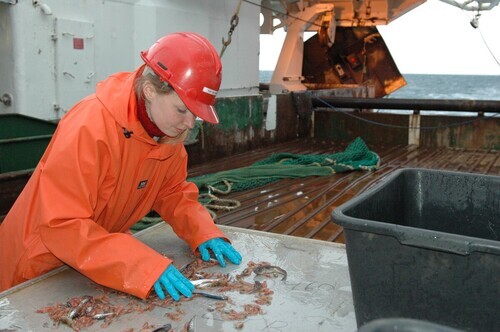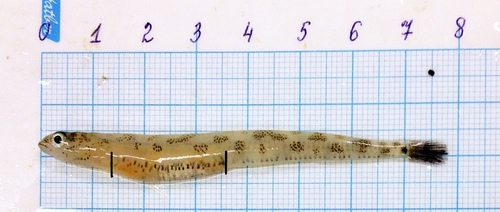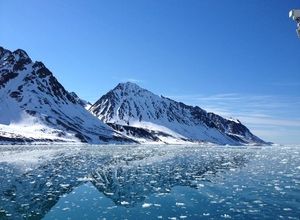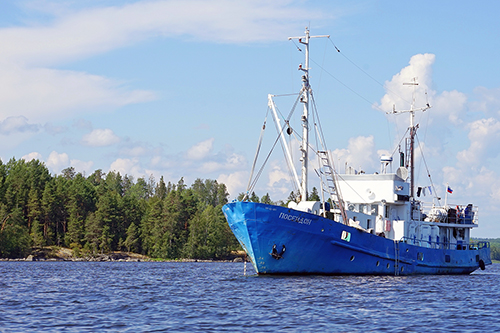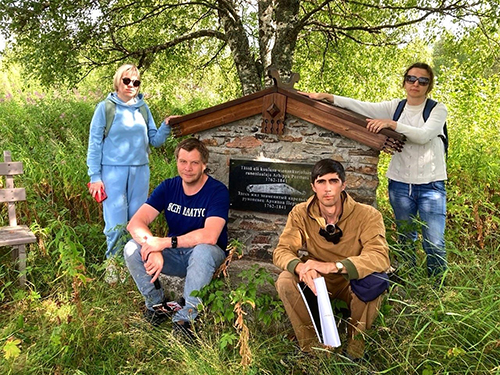The daubed shanny first attracted the attention of Norwegian scientists under the leadership of Stig Falk-Petersen in 1986. The study was continued by Russian researchers, representatives of the science school in ecological biochemistry of animals, headed by RAS Academician Nina Nemova. In 2006, Svetlana Murzina, Head of the Ecological Biochemistry Laboratory at the Institute of Biology KarRC RAS, and then, under her supervision, Svetlana Pekkoeva, Senior Researcher at the Laboratory, became involved in daubed shanny research.
To collect material, Karelian scientists have participated in a number of international marine expeditions to the shore waters of the Svalbard Archipelago, Greenland and Iceland. Although the daubed shanny has been studied for many years, the main question remained unsolved - what is the lipid sack? The answer to this question was given by the study presented in a paper published in the Scientific Reports journal of the Nature Publishing Group.
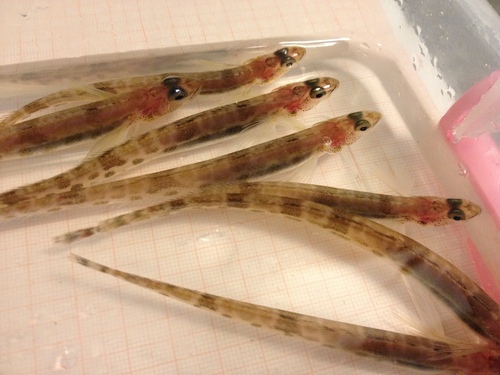
Daubed shanny adults. Photo by S. Pekkoeva / Institute of Biology KarRC RAS
The authors of the article state: lipid reserves are essential for the fish living in the cold waters of polar regions. First of all, they are the main sources of energy, enabling fish to successfully grow and develop under the extreme conditions. To study the formation and further development of the lipid sac, experts had to analyze samples of juvenile fish in different developmental stages.
The development of the daubed shanny from larvae to adults is a lengthy process, which can take up to 5-6 years on average. In other fishes, such as the relatively small polar cod, the development into a mature individual takes only 2-3 years. Interestingly, juvenile shannies go through up to six developmental stages, with the life style changing from pelagic - larvae live near the edge of ice - to demersal. This transition is accompanied by changes in the lipid sac as well.
– We were especially interested in the first stage of juvenile shanny development - we assumed this is when the development of the lipid sac should begin. But it is incredibly difficult to get hold of. There were major challenges, especially in the unstable ice conditions, in capturing the rare and tiny larvae, which actually look like a piece of white thread 3 centimeters long. As a result, it was only back in the laboratory, after a long procedure of sample preparation, that a co-author of the article Ekaterina Kondakova managed to detect the presence of large cells under the intestine in histological sections of 1st-stage shanny juveniles. It turned out these cells can have more than one nucleus and are located inside a connective tissue strand. This has given us grounds to conclude that the formation of the lipid sac begins at this stage, - said Svetlana Pekkoeva.
As further studies have shown, a small fish has a fully formed lipid sac by the age of 1-1.5 years. It consists of large "droplets" - lipid-filled cavities.
Curiously, as shannies mature and switch to a demersal life style, the lipid sac gets dissolved. As researchers explain, living at the bottom, adults enjoy a more diverse diet, their locomotor activity and energy costs decrease, and the lipid sack is no longer needed.
The paper also analyzes other changes in the body structure of the daubed shanny through the ontogeny. In addition to the lipid sac, the research team applied histological methods to study other tissues and organs: thyroid gland, heart, liver, digestive tract, blood and gonads - sex glands. This study comprehenstively portrays the changes in the fish body and reveals its specific adaptations during the transition of juveniles from living in the water column to living near the bottom.
It came as a surprise to the scientists that there were no erythrocytes in the blood of the fish during the first developmental stages. Red blood vessels were found in sample sections only in older juveniles that were transitioning to the demersal lifestyle. The authors believe such changes may be due to several factors, such as differences in the availability of oxygen in different water layers, increased requirements for oxygen supply to tissues during the growth of juveniles, variations in the level of globin gene expression at different developmental stages. The results obtained have enabled parallels to be drawn between the development of Arctic and Antarctic fish.

Svetlana Pekkoeva and Svetlana Murzina on an Arctic expedition on board the research vessel ñóäíà Helmer Hanssen / Photo from S. Pekkoeva’s archive
The studies first of all contribute to basic scientific knowledge. New data on the structure of daubed shanny organs and tissues at different stages reveal the previously unexplored aspects of the behavior and life cycle of the species, and provide explanations for the adaptation strategies of the fish during its growth and development in the ice-cold waters at high latitudes.
The published results open prospects for further research. Monitoring studies - long-term observations of the status of daubed shanny - can provide a basis for drawing conclusions about the impact of the climate change, anthropogenic impact and other factors on the Arctic fish fauna. Molecular genetic methods make it possible to study specific aspects of the metabolism at the lipid level in high-latitude fish, including "omega-3,6,9" fatty acids, which are an important component of functional nutrition for maintaining overall health in humans. The specific features of the metabolism of these acids, namely in fish, are of particular interest for the attempts to create the necessary conditions for fish aquaculture, in northern regions as well.
Ministry of Science and Higher Education Russia: Scientists determined when an arctic fish turns into a “health capsule” (in Russian)




